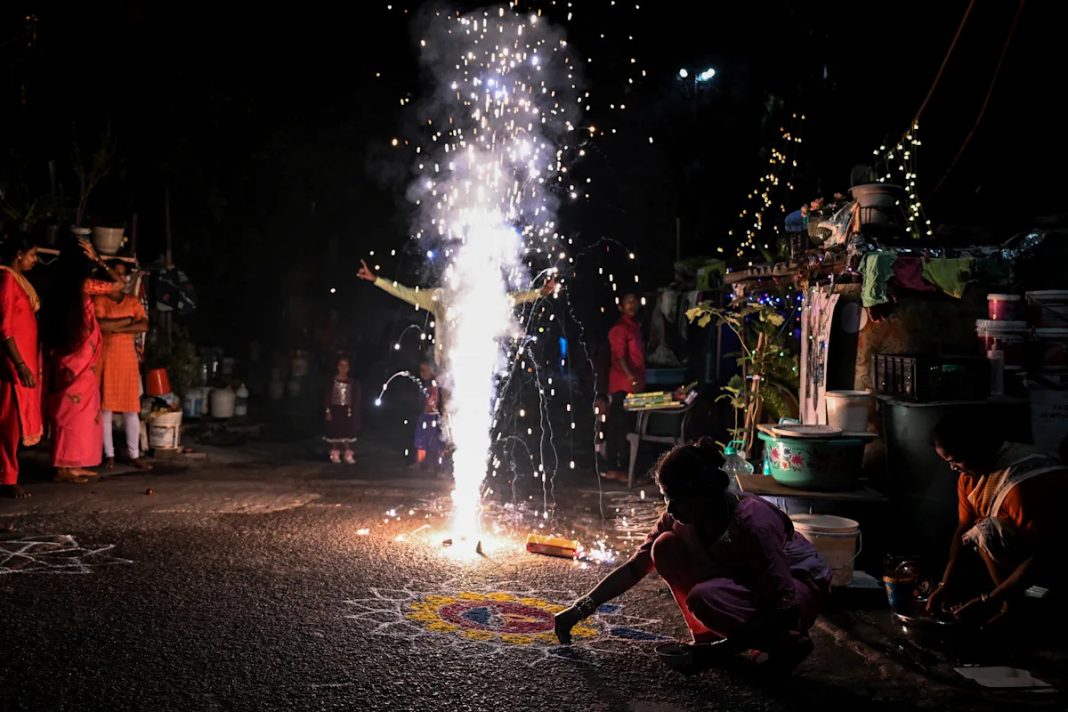Fireworks set off to celebrate the Diwali festival have worsened the air quality in India’s capital New Delhi, making it the most “hazardous” in the world.
The city’s air quality index (AQI) measurement hit 442 on Tuesday morning, according to Swiss air quality firm IQAir.
As happens every year, the widespread use of fireworks on Monday evening to mark the festival of lights added to the pollution released in cooler months by traffic, industry and agriculture to make New Delhi the globe’s most polluted major city, IQAir said.
The concentration of PM2.5 – tiny airborne particles small enough to enter the lungs and cause serious illness – in the city’s air on Tuesday morning was more than 59 times the World Health Organization’s recommended annual guideline.
India’s Central Pollution Control Board (CPCB) rated New Delhi’s air quality “very poor,” with an AQI of 350. CPCB considers an AQI of 0-50 as good.
Vehicles move on a road shrouded in smog in New Delhi, India, on October 2, 2025 [Bhawika Chhabra/Reuters]
The toxic air is partly fuelled by fireworks from the Hindu festival, which is being celebrated from October 18–23.
India’s Supreme Court last week relaxed a ban on firecrackers in the city, permitting the use of so-called “green crackers,” which have lower emissions than conventional fireworks, for a maximum of three hours each on Sunday and Monday. But there were widespread reports of fireworks being set off long outside the allotted times.
Days of ‘very poor’ air
New Delhi is unlikely to get much relief in the coming days. The Ministry of Earth Sciences said it expects air quality to remain “Very Poor to Poor” with AQI levels between 201 and 400.
India’s capital and its neighbouring districts are prone to a thick smog every winter as cold, heavy air traps construction dust, vehicle emissions and smoke from agricultural fires, leaving many of its 20 million residents struggling with respiratory illnesses.
In the past, authorities have closed schools, stopped building work and placed restrictions on private vehicles to try to tackle the problem.
Last November, Delhi was overcome by weeks of deadly smog – causing the AQI to hover one evening at more than 1,700 – at least 17 times higher than the acceptable limit.

A commuter with his face covered in cloth rides along a bridge across the Yamuna river in New Delhi on October 21, 2025 [AFP]
India is not alone among South Asian nations in battling such toxic air.
The air quality reading for Lahore in Pakistan was 234 on Tuesday, the second highest in the world, according to IQAir data.
Lahore is the capital of the Punjab province, which shares a border with India. The government has implemented an “emergency plan” to tackle pollution, including by curbing farm fires and smoke-emitting vehicles, while using anti-smog guns in polluted areas.
“Right now, the major issue is the air coming from Indian Punjab and other parts, which is affecting the air quality in various parts of Pakistani Punjab,” said Sajid Bashir, a spokesperson for Punjab’s Environment Protection Agency.

